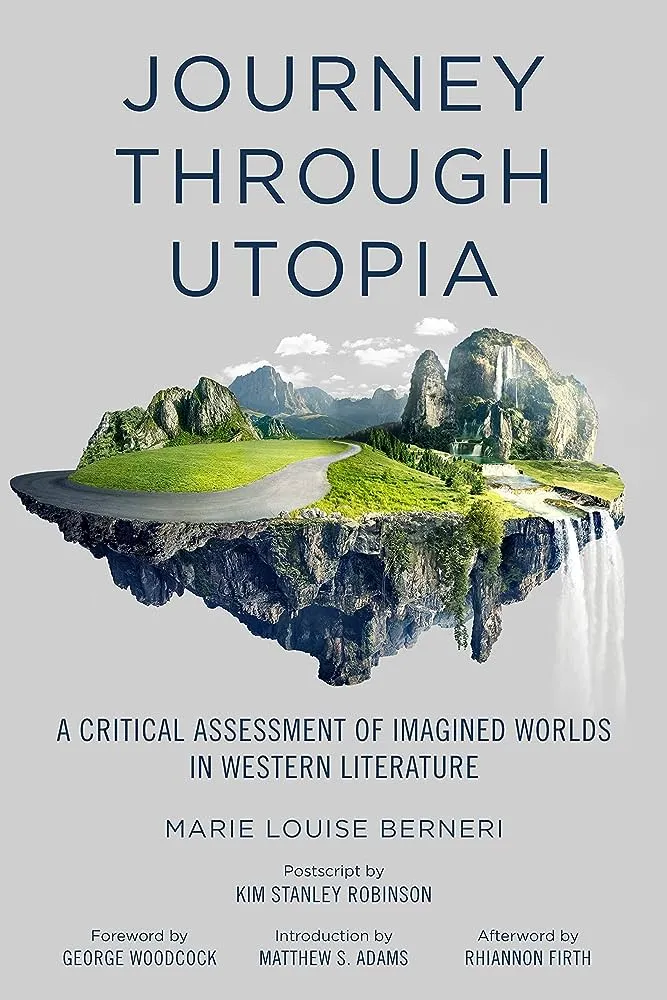Journey through Utopia is a richly detailed and critically compelling examination of utopian literature, beginning with Plato’s Republic and continuing through to Huxley’s Brave New World. Utopias have been penned with diverse intentions: some as pictures of an ideal society, some as blueprints for action, yet others, especially in times of severe censorship, as covert criticisms of existing conditions.
Marie Louise Berneri exposes the dark shadow that lingers above most utopian works by emphasising the intolerant and authoritarian nature of these visions, and she warns of the doom that awaits those foolish enough to put their trust in an ordered and regimented world.
This new edition is framed with an Introduction from Matthew S. Adams that situates Berneri’s work in the context of her life, and concludes with an Afterword from Rhiannon Firth that extends Berneri’s analysis into contemporary utopias. Journey through Utopia is a necessary companion, and in many cases an antidote, to imagined fictions from antiquity to the present.
What People Are Saying
“Berneri’s comments, explicit and implicit, are for the most part acutely discerning.... This is a fascinating work.” Times Literary Supplement
“As an old student of utopias, I have a special regard for Marie Louise Berneri’s Journey through Utopia; for it is the most comprehensive and the most perceptive study of that ideal land that I have come across in any language.” Lewis Mumford
“A demolishment of dream worlds (not ones that have been put into practice) in this historical survey and analysis of utopian thought from antiquity to modern times underscores the regimentation, authoritarian and narrow concepts of freedom that such prospectuses embodied.” Kirkus Reviews
“Marie Louise Berneri identifies the authoritarian Utopian State as a concept running through much of the literature. A desire to orchestrate good behavior through various hierarchical arrangements, analogous to a mechanical system with predictable results ensured by regulated consistent behavior, is a dark shadow over many utopias.” Chris Carlsson, author of Nowtopia
“Berneri’s wide-ranging selection of readings constitutes a superb introduction to the history of utopian thought, and her often brilliant and insightful commentary remains highly illuminating.” John P. Clark, author of The Impossible Community: Realizing Communitarian Anarchism
About the Contributors
Marie Louise Berneri (1918–1949) was an anarchist activist and author. She was involved with the short-lived publication Revision, with Luis Mercier Vega, and was a member of the group that edited Revolt, War Commentary, and the Freedom newspaper. She was a regular contributor to Spain and the World.
George Woodcock (1912–1995) was a Canadian writer of political biography and history, anarchist thinker, essayist, and literary critic. Some of his most enduring works include: Anarchism: A History of Libertarian Ideas and Movements; Gandhi; Dawn at the Darkest Hour: A Study of Aldous Huxley; Canada and Canadians; and The Crystal Spirit: A Biography of George Orwell.
Matthew S. Adams is lecturer in Politics, History, and Communication at Loughborough University. He is the author of Kropotkin, Read, and the Intellectual History of British Anarchism and co-editor of Anarchism, 1914–1918 and The Palgrave Handbook of Anarchism.
Rhiannon Firth is senior research officer in Sociology at the University of Essex. Her research interests include utopian political theory, anarchist social movements, prefigurative spatial practices, alternative epistemologies, and critical pedagogy. She is the author of Utopian Politics: Citizenship and Practice, which involved ethnographic research with several intentional communities, housing cooperatives, and autonomous social centres around the U.K.
(born in 1952) is a Californian through and through. He grew up in Orange County, surfed his way through UC San Diego (writing his doctoral thesis on Philip K. Dick), and now lives in Davis with two kids and a beautiful scientist wife. He spends several weeks a year above 11,500 feet in the high Sierras. Not surprisingly, he’s a good friend of Gary Snyder.

 Cart(
Cart(










